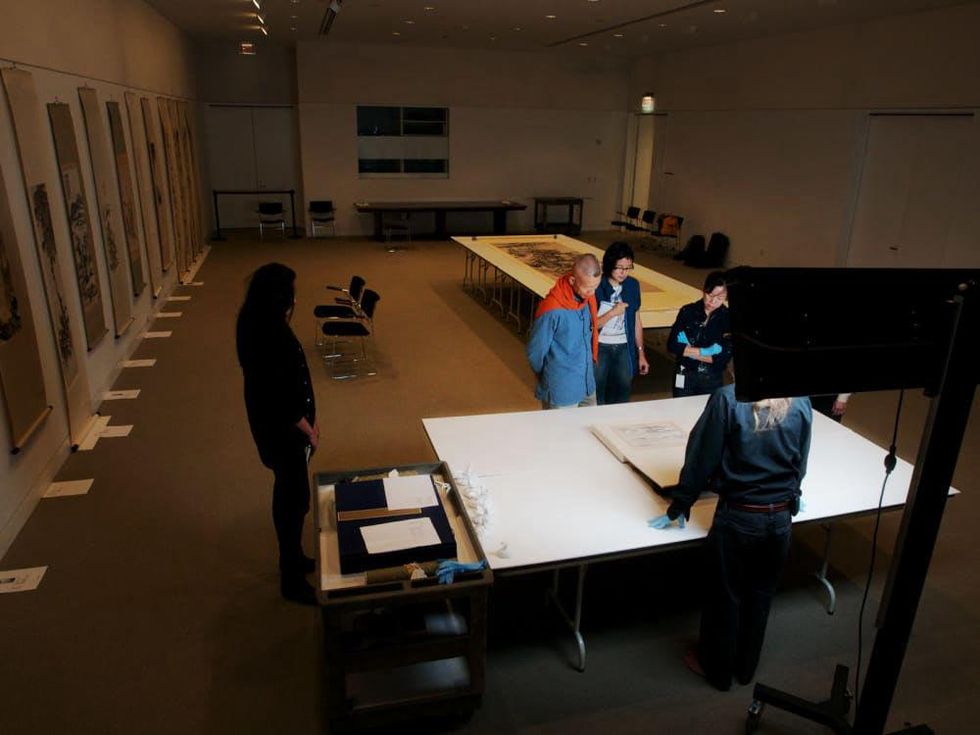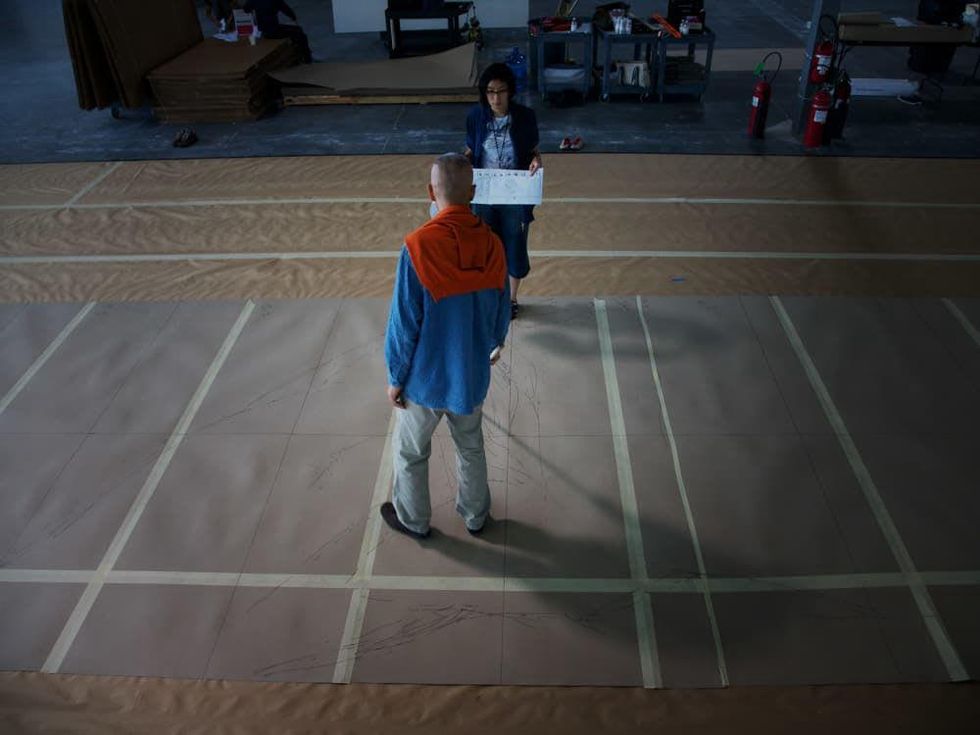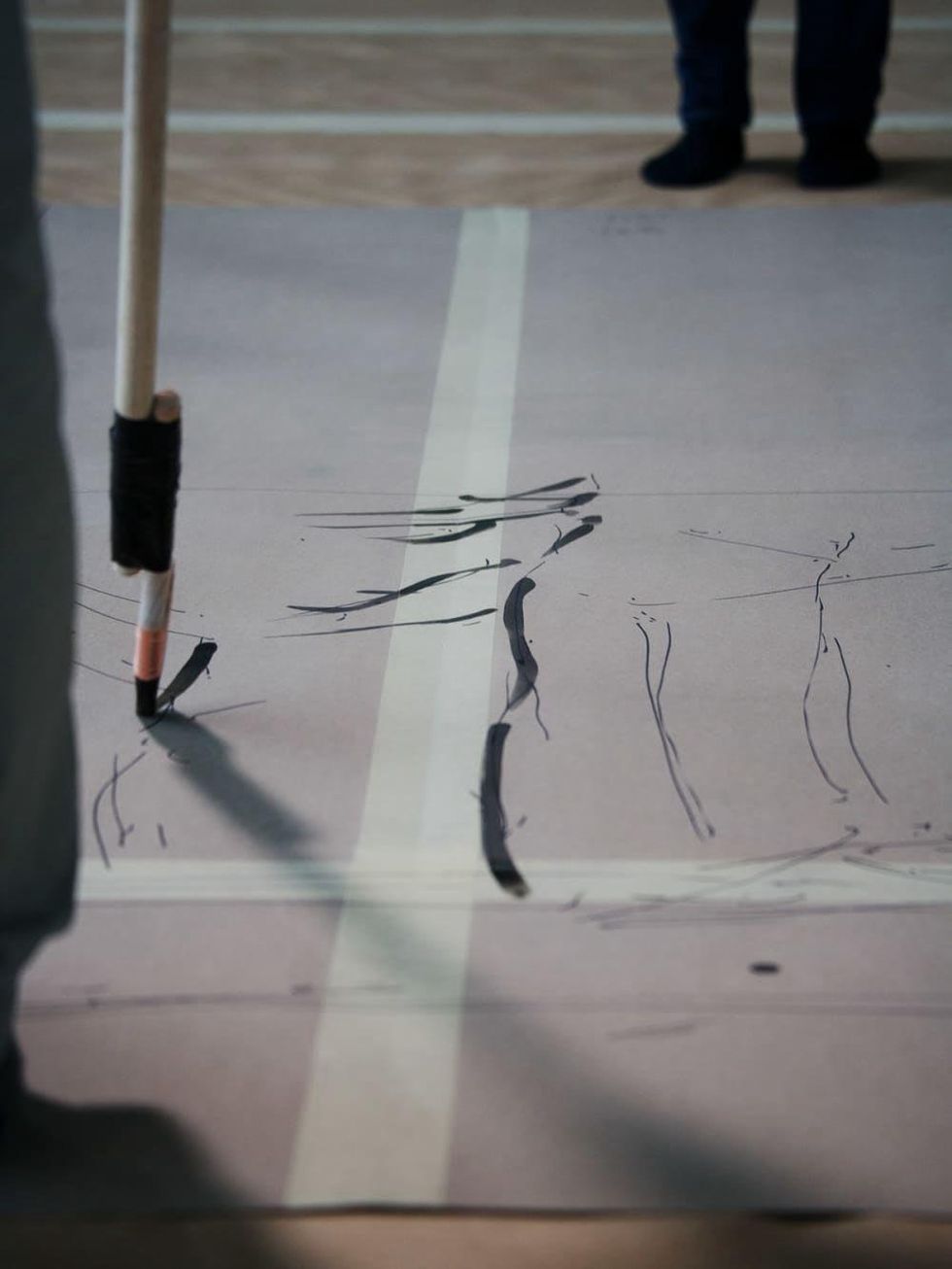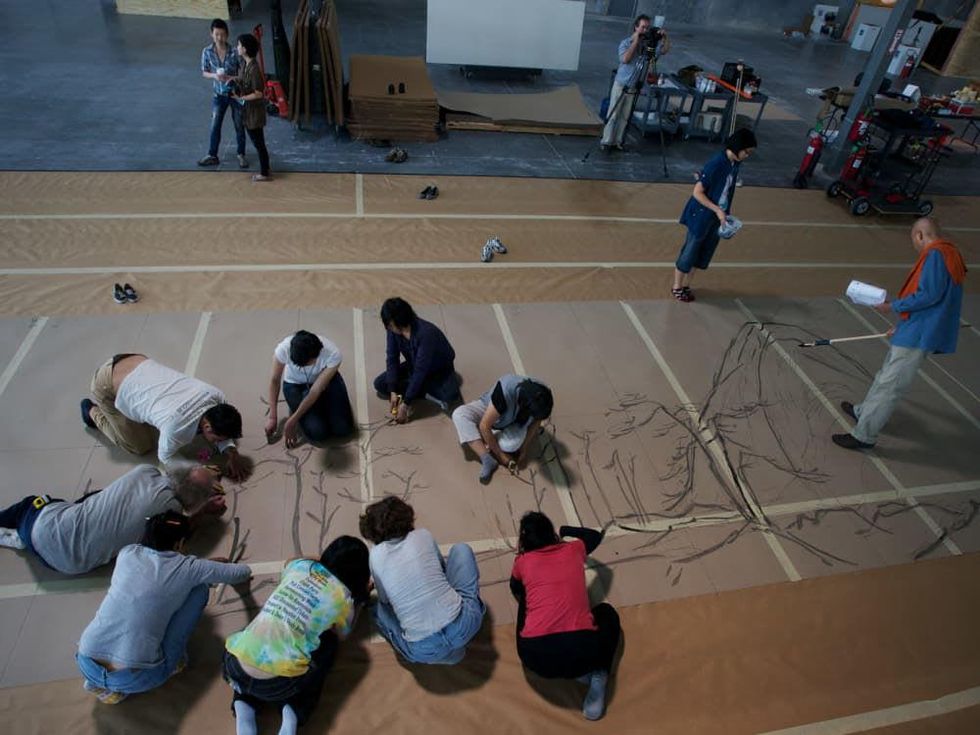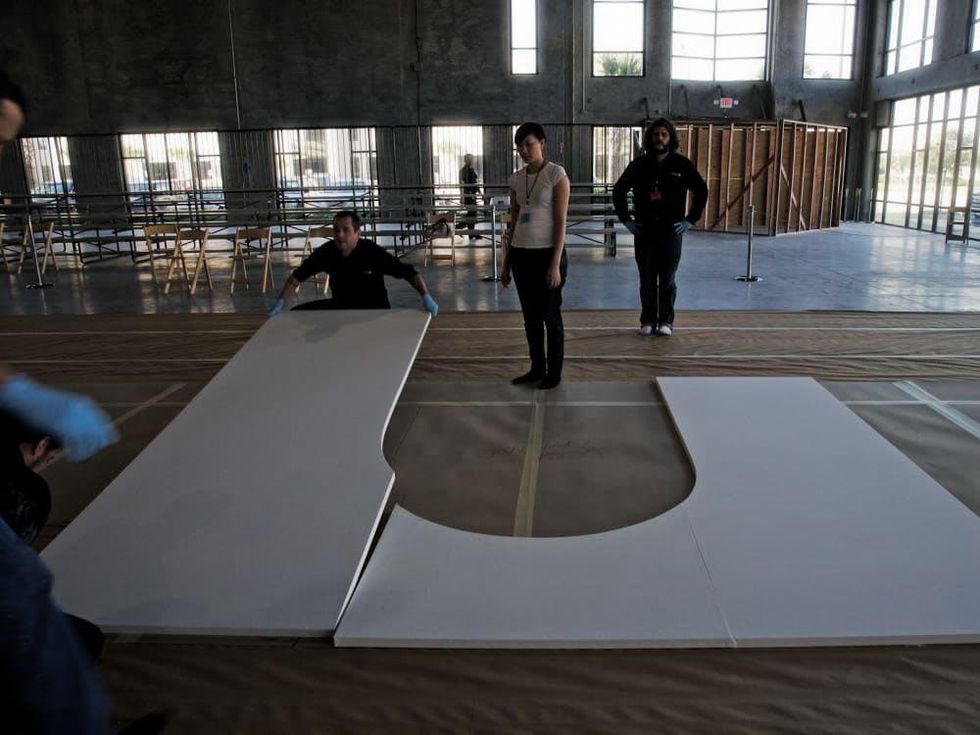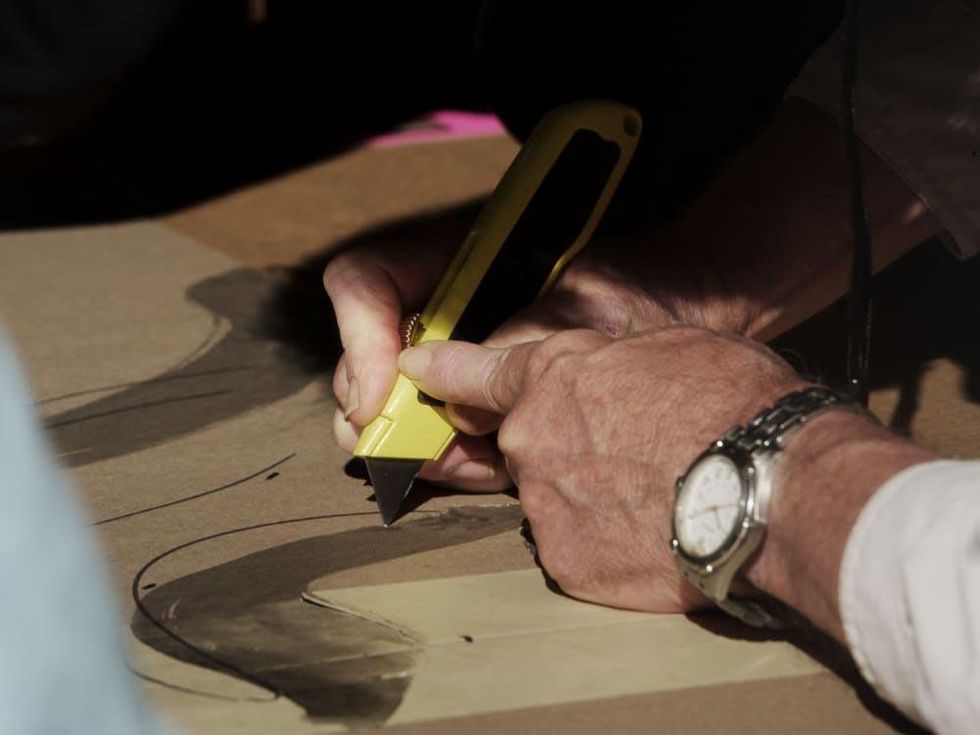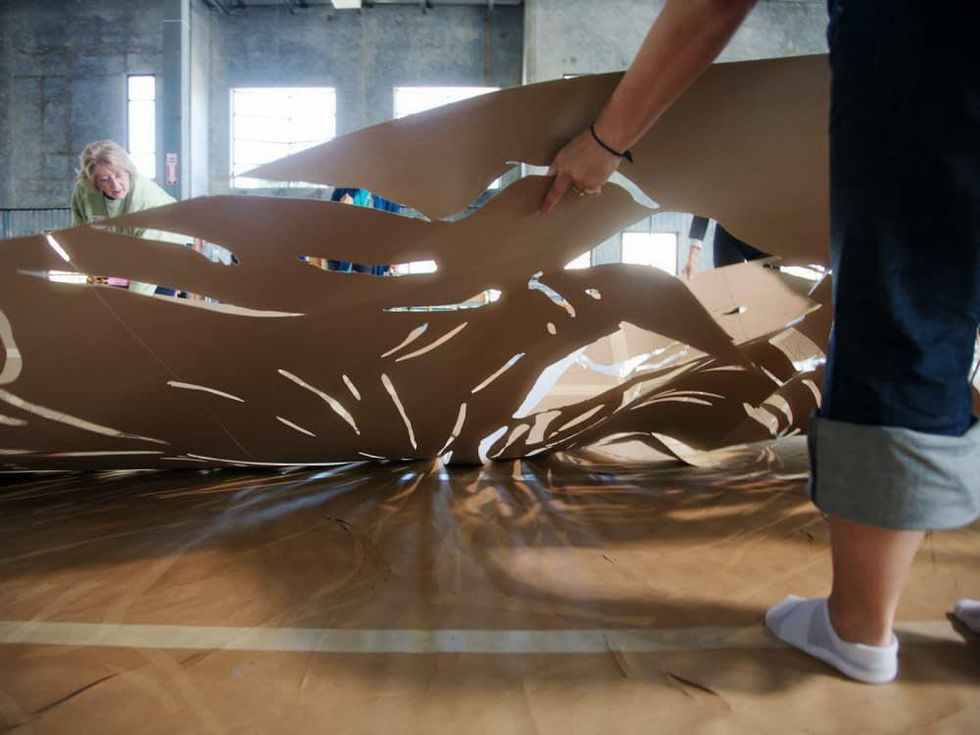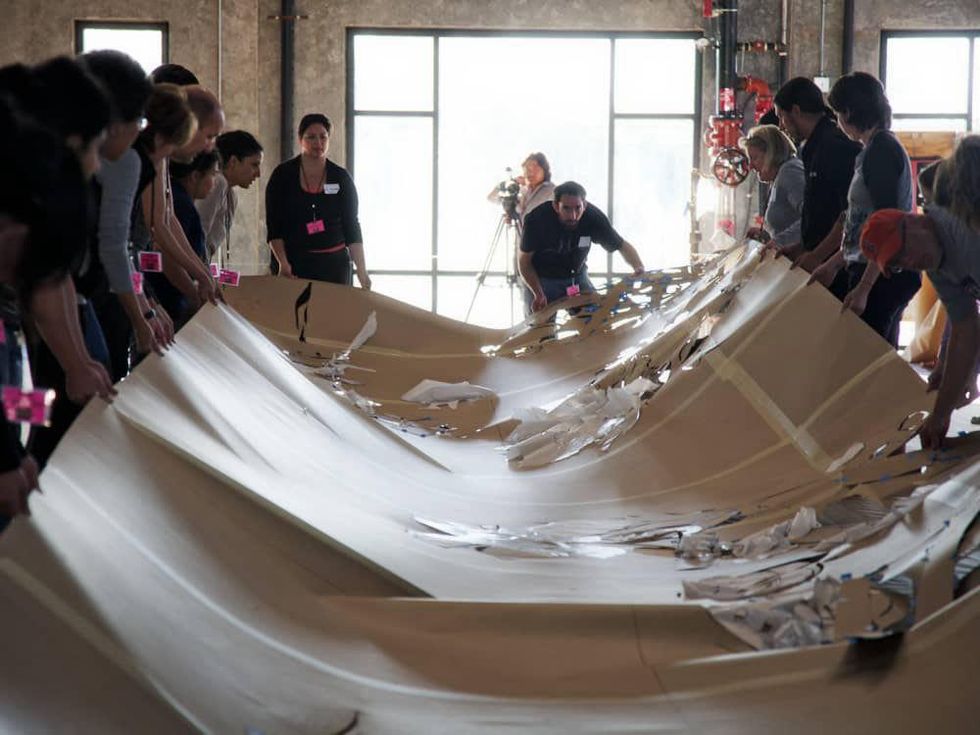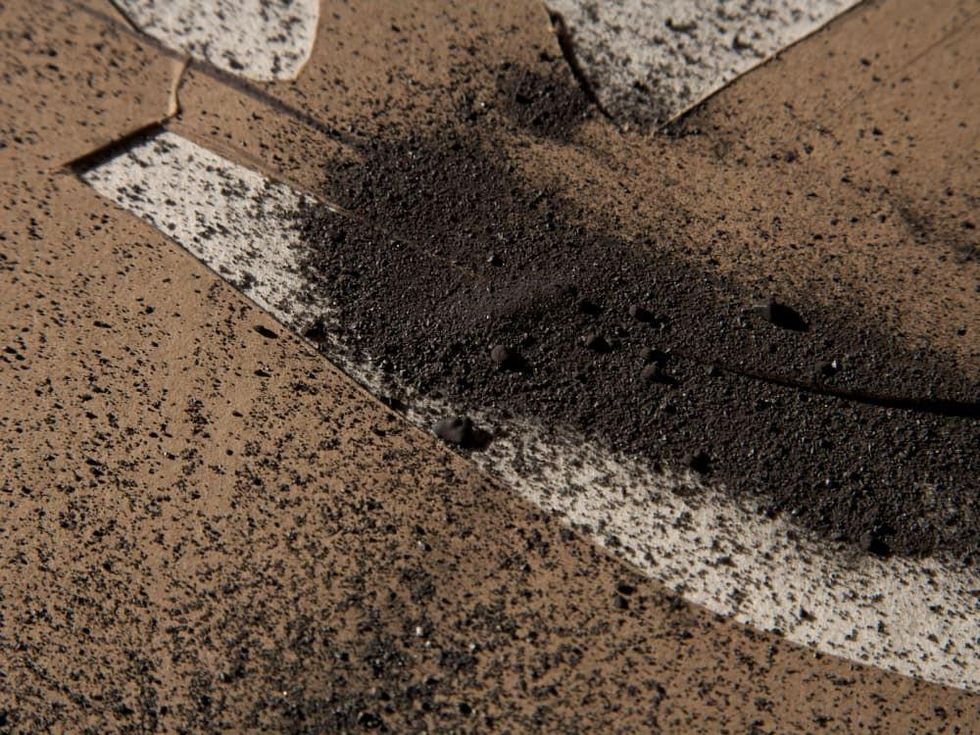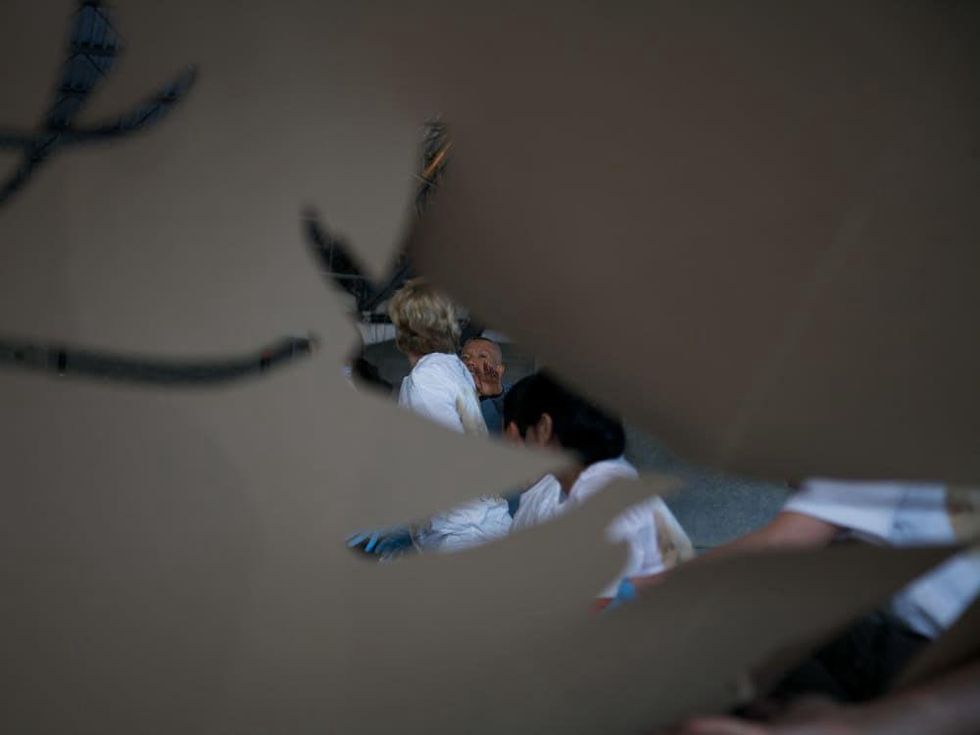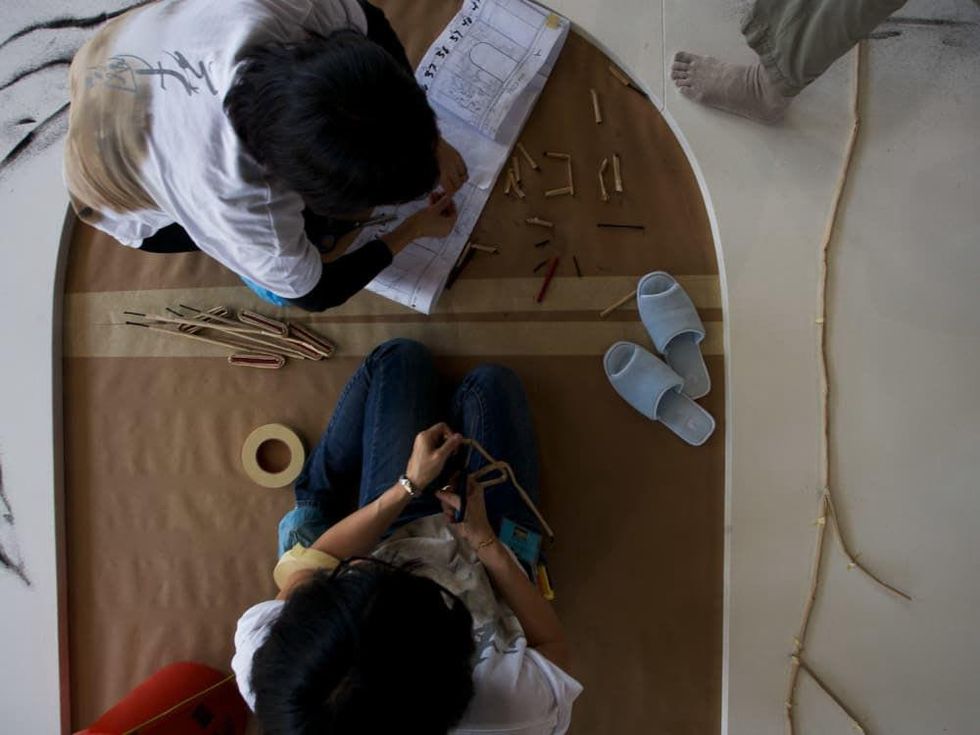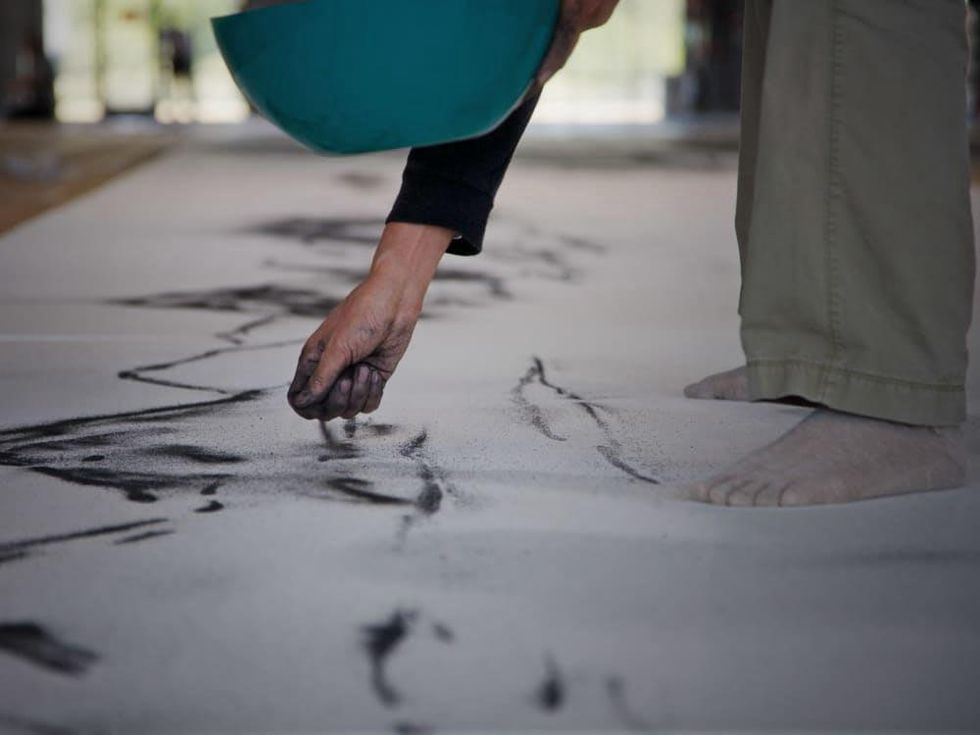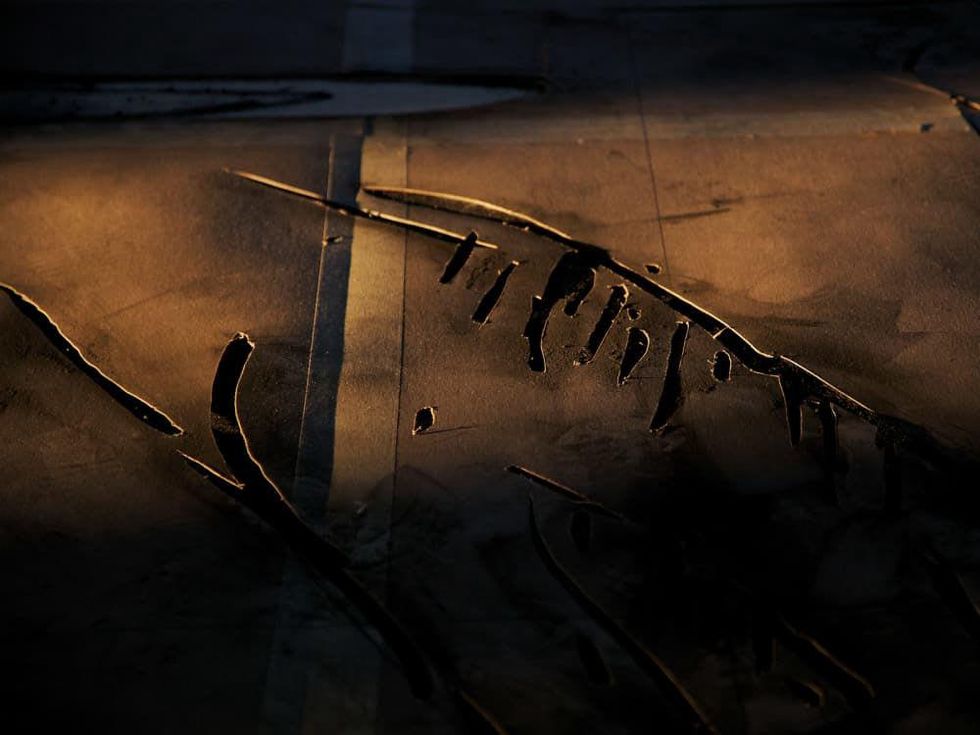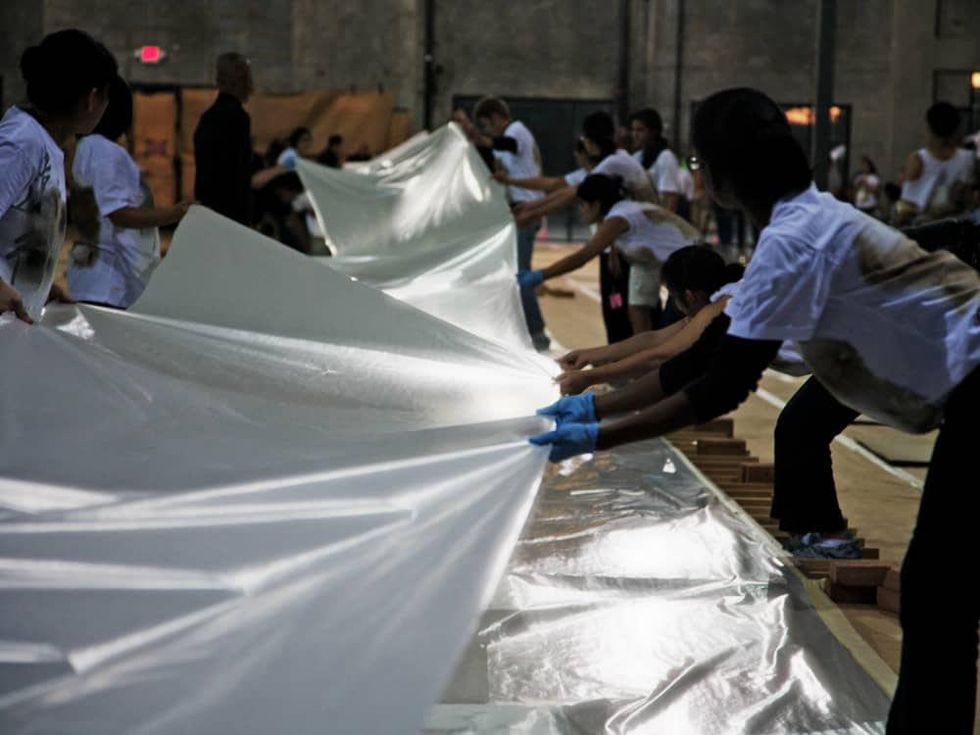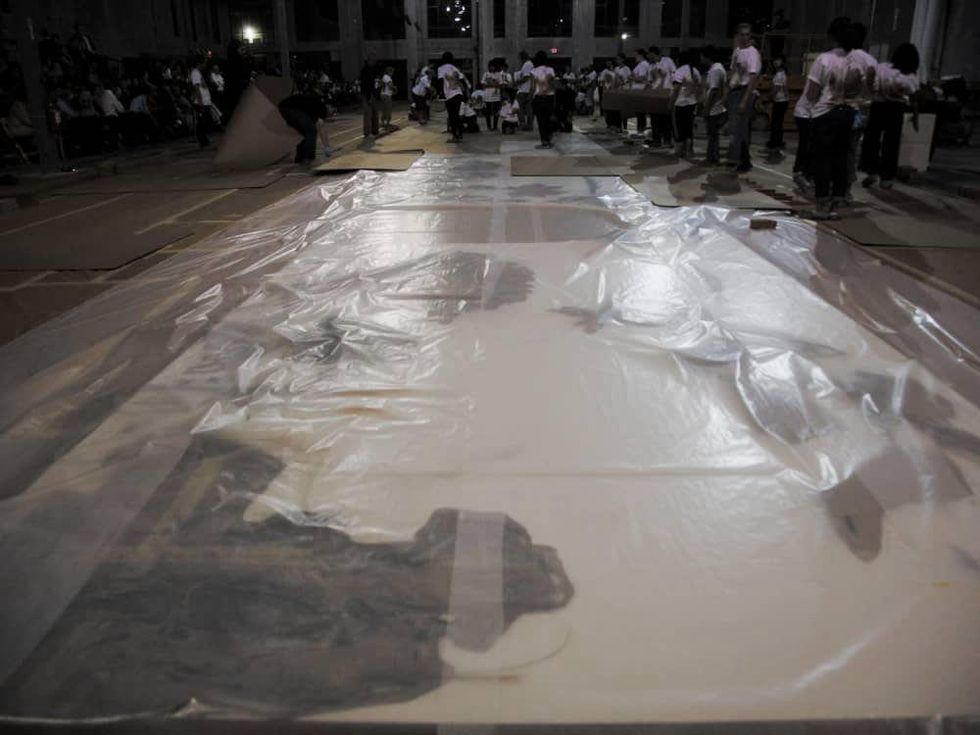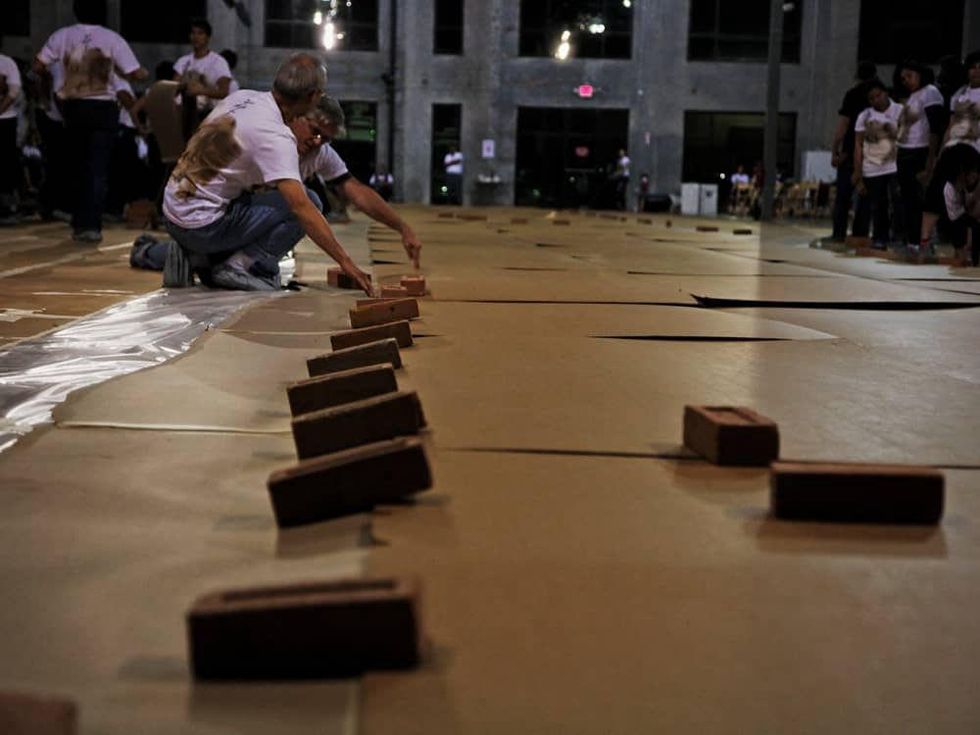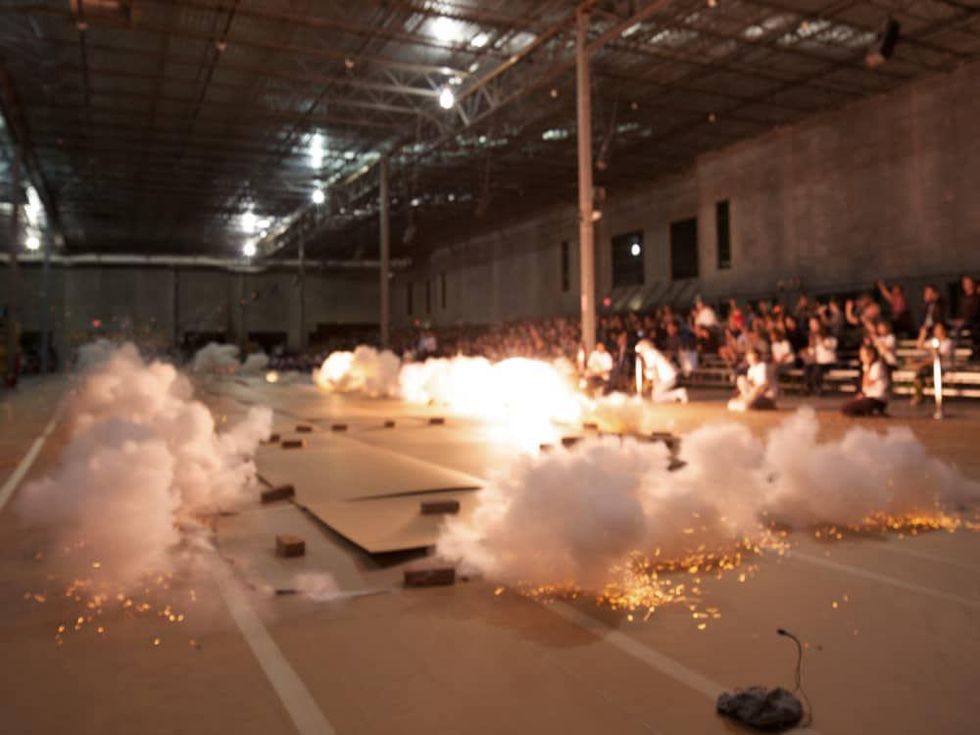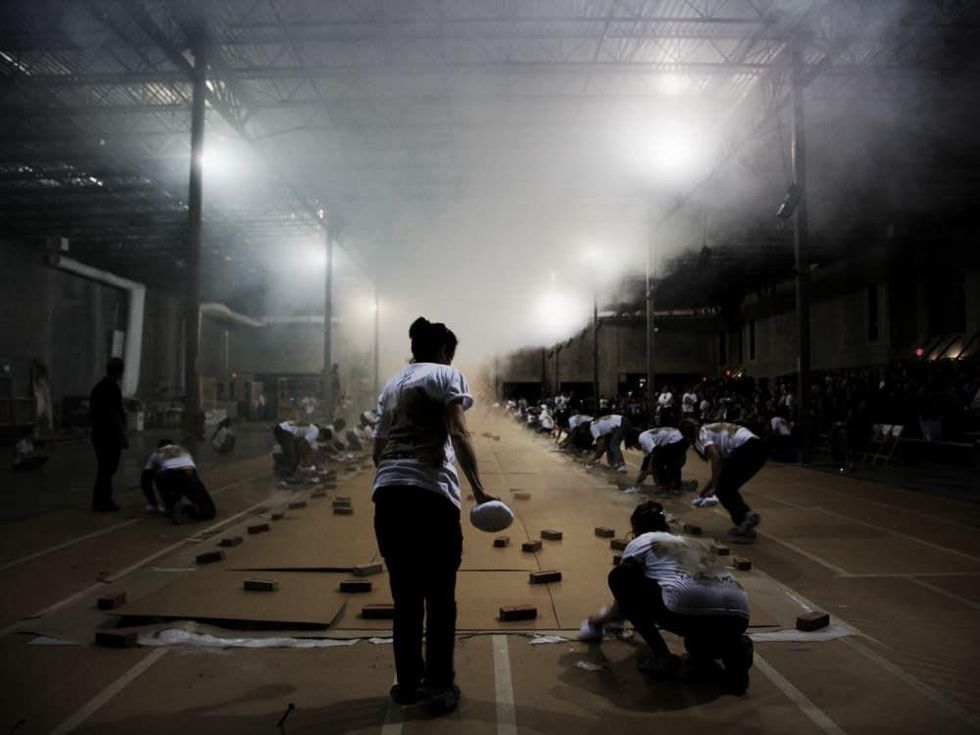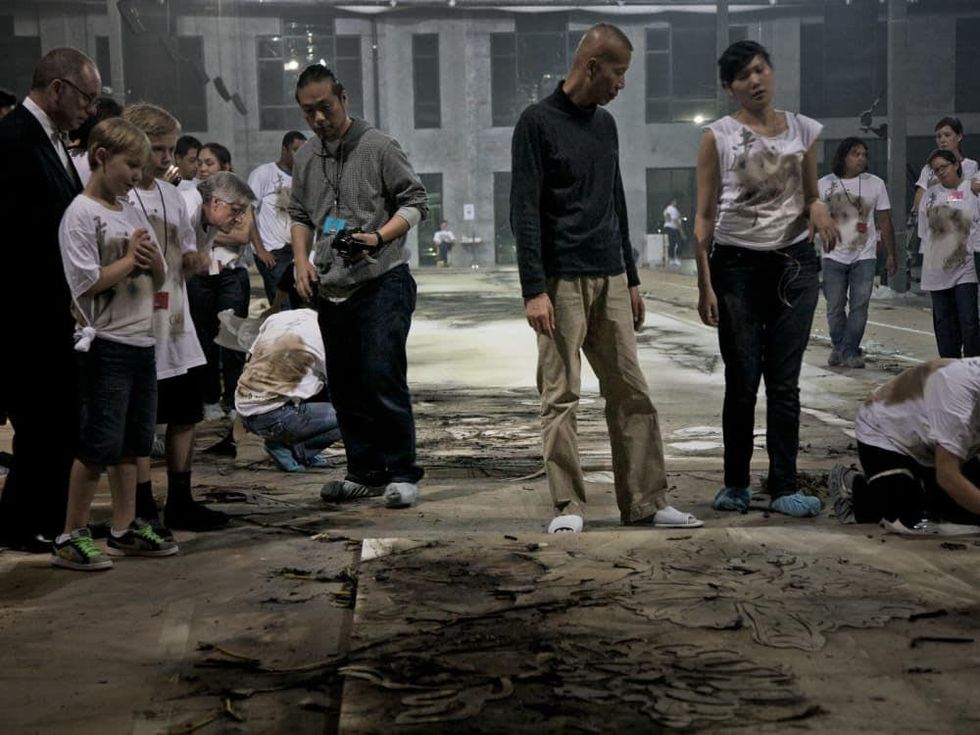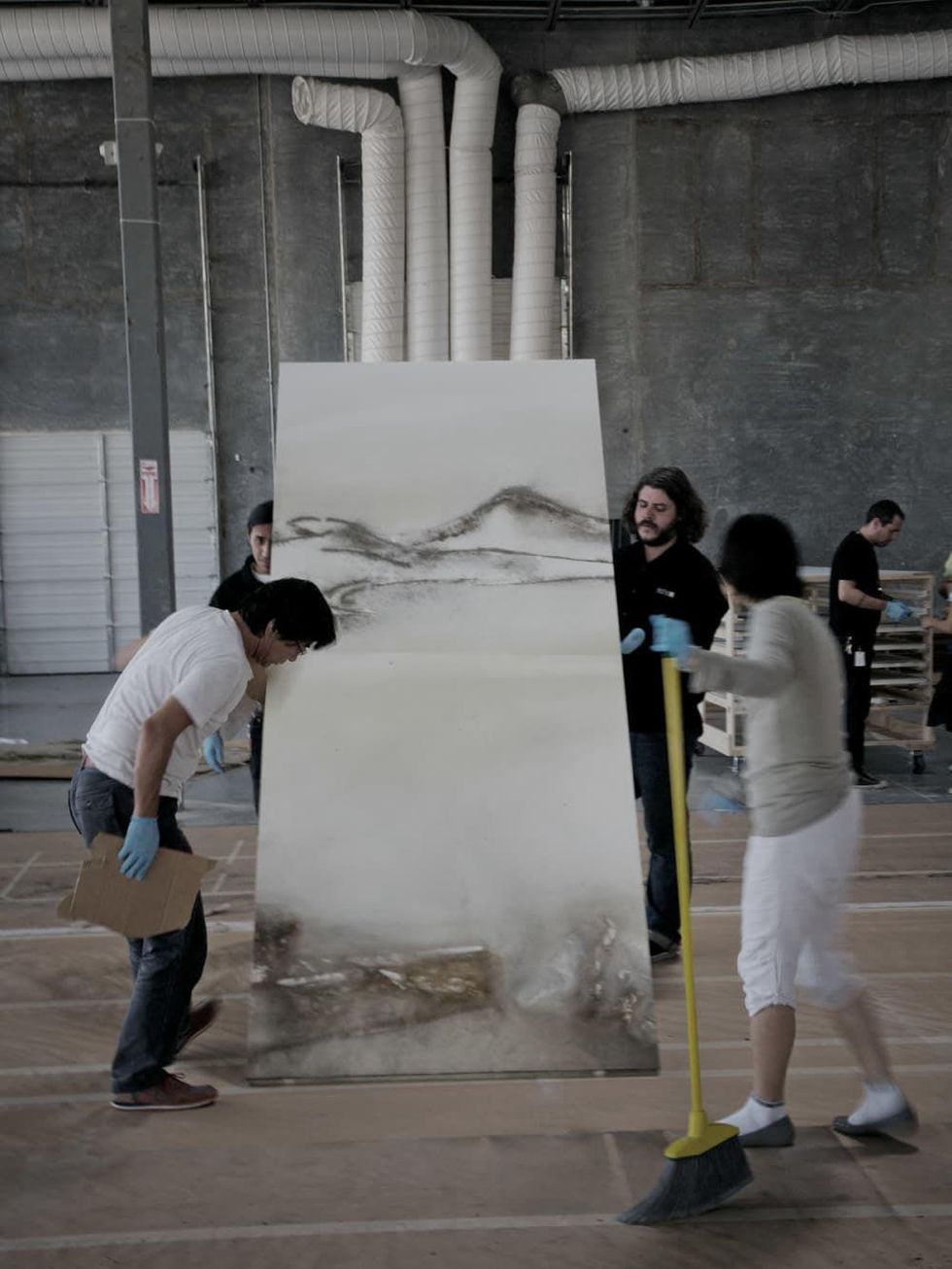The final chapter of Odyssey
Cai and the golden slippers: The secrets of MFAH's new China Gallery
 Cai Guo-Qiang discusses his gunpowder drawing with Albert Chao.Photo by Jenny Antill
Cai Guo-Qiang discusses his gunpowder drawing with Albert Chao.Photo by Jenny Antill Avalokitesva, Chinese, Northern Zhou dynasty (557-581) to Sui dynasty (581-618),carved limestone, gift of T.T. & W.F. Chao Global Foundation in honor of Mr. andMrs. Ting Tsung Chao, with additional funds provided by the Director'sAccessions Fund
Avalokitesva, Chinese, Northern Zhou dynasty (557-581) to Sui dynasty (581-618),carved limestone, gift of T.T. & W.F. Chao Global Foundation in honor of Mr. andMrs. Ting Tsung Chao, with additional funds provided by the Director'sAccessions Fund Ritual Vessel (Zun), Chinese, Shang Dynasty, 12th century B.C., bronze, museumpurchase with funds provided by the Friends of Asian Art
Ritual Vessel (Zun), Chinese, Shang Dynasty, 12th century B.C., bronze, museumpurchase with funds provided by the Friends of Asian Art
The 42 panels of Chinese gunpowder artist Cai Guo-Qiang's Odyssey envelope the newly reinstalled Ting Tsung and Wei Fong Arts of China Gallery at the Museum of Fine Arts, Houston and will debut to the public on Sunday.
What was originally meant to hold a variety of ancient objects has now been distilled to four distinctive pieces that collaborate to form a dynamic dialogue with Cai's first permanent museum installation.
A vestibule from the two-story main gallery of the Caroline Weiss Law Building will display calligraphic texts from ancient China, leading into the main gallery with Cai's drawings. Walking into the space, the focal point of the gallery is a dramatic depiction of a mountain peak and waterfall. Like a mirage, a Buddhist statue stands at the conclusion of the waterfall, as if it has just descended from above. The statue is an Avalokitesvara, the enlightened being of Buddhism representing mercy, wisdom and compassion.
Believed to rule over the Paradise of the West, where believers went after breaking the cycle of death and rebirth, the 6th-century Avalokitesvara evinces the Silk Road's influence of bringing eastern styles to China.
"In this one sculpture, this is the embodiment of multiculturalism," explains Asian art curator Christine Starkman. The headdress is Hindi, and the images of pendants are imported from the Near East.
Cai's fascination with the Chinese scholarly tradition comes full circle in the new gallery. A 17th-century Ming Dynasty scholar's table screen depicts the literati class reading poetry, surrounded by geographic features such as a banana tree and low mountains, that are echoed in elements of Cai's landscape.
The screen incited Cai's adoration when Starkman showed it to him less than two weeks ago. The curator culled the work of contemporary artist and MacArthur fellow Xu Bing as a conceptual connection to the scholarly imagery of the screen. Xu's work, Book from the Sky, is encased in a table, revealing the artist's thousands of carved Chinese characters — each missing a stroke, rendering the texts illegible.
This 20th-century intervention brings a visual harmony (as a horizontal table display) and conceptually links the artifacts with Cai's interest in bookmaking, a practice he learned as a child in Quanzhou.
A bronze ritual vessel and ceramic wine jar completes the chronological narrative within the main gallery, while also paying homage to Cai's imagery: The bronze vessel would historically feature on a scholar's table, and the jar's painterly depiction of bamboo prevails on the panels.
It's not until the visitor enters the gallery's third room and turns away from Cai's panels that the artist's message sincerely manifests. In a small, dark vestibule linking a future Japanese art gallery rests a pair of 11th-century golden slippers, respectively depicting the male and female through a dragon and phoenix. Like the Avalokitesvara, the slippers' styling reveal that ancient China was not a vacuum, but was informed by travelers from further east.
"These are the expression of foreigners coming into China," elaborates Starkman. "I asked Cai if it would be all right for me to bring these in here," she recounts, "and he said, 'Yes they should be here.' He says they represent the footprints of the people coming to China, and that foreigners have been coming for centuries.' "
Ultimately, Cai requested the golden slippers be included because they embody the cultural exchange that has unfolded in China, and continues today. Says Cai, "It's all part of the odyssey."
Relive the key moments of CultureMap's livestream of ignition night:

